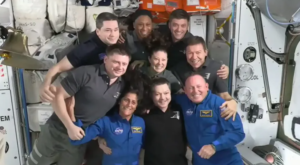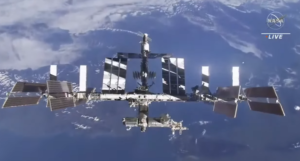Boeing Starliner Crew Flight Test Will End September 6
NASA decided today that the Boeing Starliner Crew Flight Test mission will return to Earth on September 6. The spacecraft will be empty when it lands in New Mexico instead of bringing back the two NASA astronauts who were aboard when it launched. Worries that the thrusters may not perform as planned led the agency to decide to leave the astronauts aboard the International Space Station until they can return on an alternative spacecraft, SpaceX’s Crew Dragon, in February.
The Starliner CFT mission is just that, a test flight of Boeing’s capsule with a crew as part of NASA’s commercial crew program. NASA awarded contracts to Boeing and SpaceX in 2014 to build two dissimilar transportation systems to ferry crews to and from the ISS after the shuttle program was terminated. It wanted two systems so that if one was grounded or otherwise unavailable for any reason, they’d have another.
The decision is paying off.
Starliner CFT lifted off on June 5, but during the one-day trip to the ISS the propulsion system experienced helium leaks and thruster failures. After weeks of analysis, however, NASA could not become sufficiently comfortable to risk using it to bring the astronauts, Butch Wilmore and Suni Williams, back to Earth considering they can easily keep them on the ISS and bring them back on the next scheduled crew rotation mission using SpaceX’s Crew Dragon. Both are veteran astronauts and Navy test pilots who have spent long-duration missions on the ISS already.

Crew Dragon has been taking crews back and forth about every six months since 2020. SpaceX also launches other Crew Dragon missions for private astronauts, so has a considerable track record of success.
NASA made it clear they were disappointed not to be able to complete the Starliner CFT mission as planned, but the Flight Readiness Review decision last week was unanimous.
Today’s decision is to undock Starliner autonomously on Friday, September 6, at 6:04 pm ET. Unlike Crew Dragon, which splashes down in the ocean, Starliner lands on land. It will touch down at White Sands, New Mexico almost exactly 6 hours later at 12:03 am ET September 7, which will be 10:03 pm September 6 local time at the landing site.
The portion of the spacecraft with the problematic thrusters and helium leaks, the Service Module, does not return to Earth. It separates from the Crew Module and burns up in the atmosphere, one of the reasons NASA has been keeping it in orbit all these weeks so they could perform tests while they could.

This will be the third Starliner landing at White Sands. Boeing has conducted two uncrewed flight tests already. Serious problems on the first one in December 2019 led to a decision to refly it without a crew onboard. It was two-and-a-half years before Boeing was ready to try again. The second uncrewed flight in May 2022 was a success, but additional setbacks delayed this crewed flight test until now.

How long it will take Boeing to make the necessary fixes this time is unknown, but Boeing itself will bear the cost. The commercial crew program uses a Public-Private Partnership model where the government and the company invest in development, but the company owns the product and NASA purchases services under a fixed price contract. NASA awarded Boeing a $4.2 billion contract in 2014 and later provided an additional $326 million because of change orders to the contract, but Boeing has had to pay $1.6 billion of its own money to fix the problems encountered so far.
Boeing CEO Kelly Ortberg told NASA Administrator Bill Nelson last week the company remains committed to the program despite the financial losses. Nelson told reporters he is 100 percent confident Starliner will fly again with a crew.
Butch and Suni are already integrated into the existing 7-person ISS crew and will formally become part of the next regular ISS crew rotation or “increment.” Crew-9 will launch in September with only two instead of four replacements for Crew-8, which has been aboard since March, so the other two seats are available for Butch and Suni.

The ISS has been permanently occupied with international crews from the United States, Russia, Canada, Japan and Europe rotating on regular schedules for almost 24 years, since November 2, 2000. Russia’s Soyuz, the U.S. space shuttle, and SpaceX’s Crew Dragon have been the vehicles used to rotate the crews. Starliner will join when it’s ready.
All astronauts and cosmonauts on the ISS always have a “lifeboat” — currently either a Soyuz or a Crew Dragon — available to whisk them away from the ISS in an emergency. No one is stranded.
After Starliner leaves, the Crew-8 Crew Dragon and Soyuz MS-25 will be docked there. Once Crew-9 arrives, there will be a several-day handover with Crew-8 until they depart. Russia is about to do its own crew exchange on September 11, launching Soyuz MS-26 to replace Soyuz MS-25.

Russians and Americans fly on each other’s spacecraft to ensure there is always at least one Russian and one American on board since they are needed to operate the interdependent Russian and U.S. segments respectively. NASA astronaut Don Pettit will launch on Soyuz MS-26. Roscosomos cosmonaut Aleksandr Gorbunov is assigned to Crew-9.
User Comments
SpacePolicyOnline.com has the right (but not the obligation) to monitor the comments and to remove any materials it deems inappropriate. We do not post comments that include links to other websites since we have no control over that content nor can we verify the security of such links.